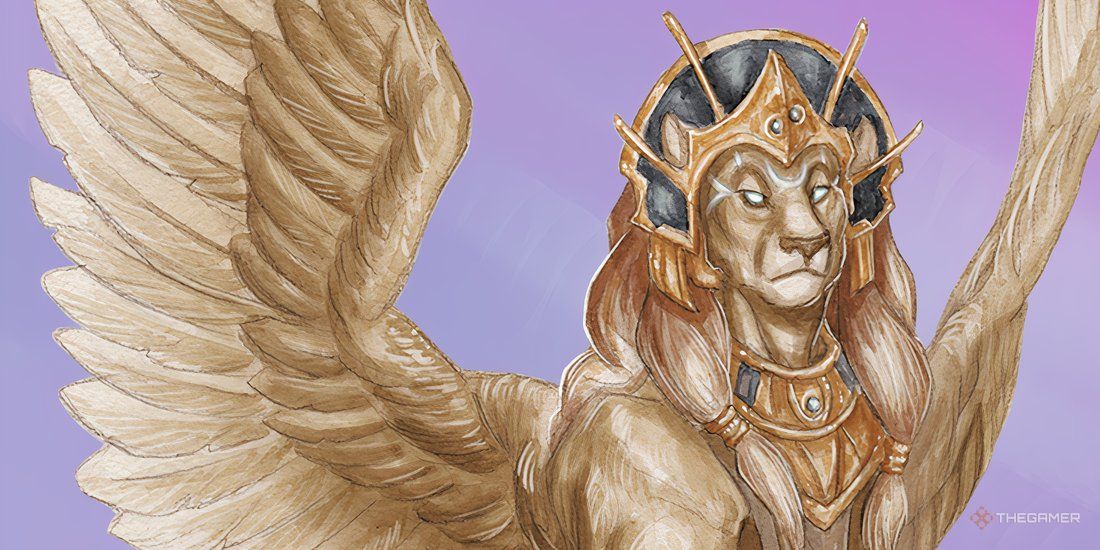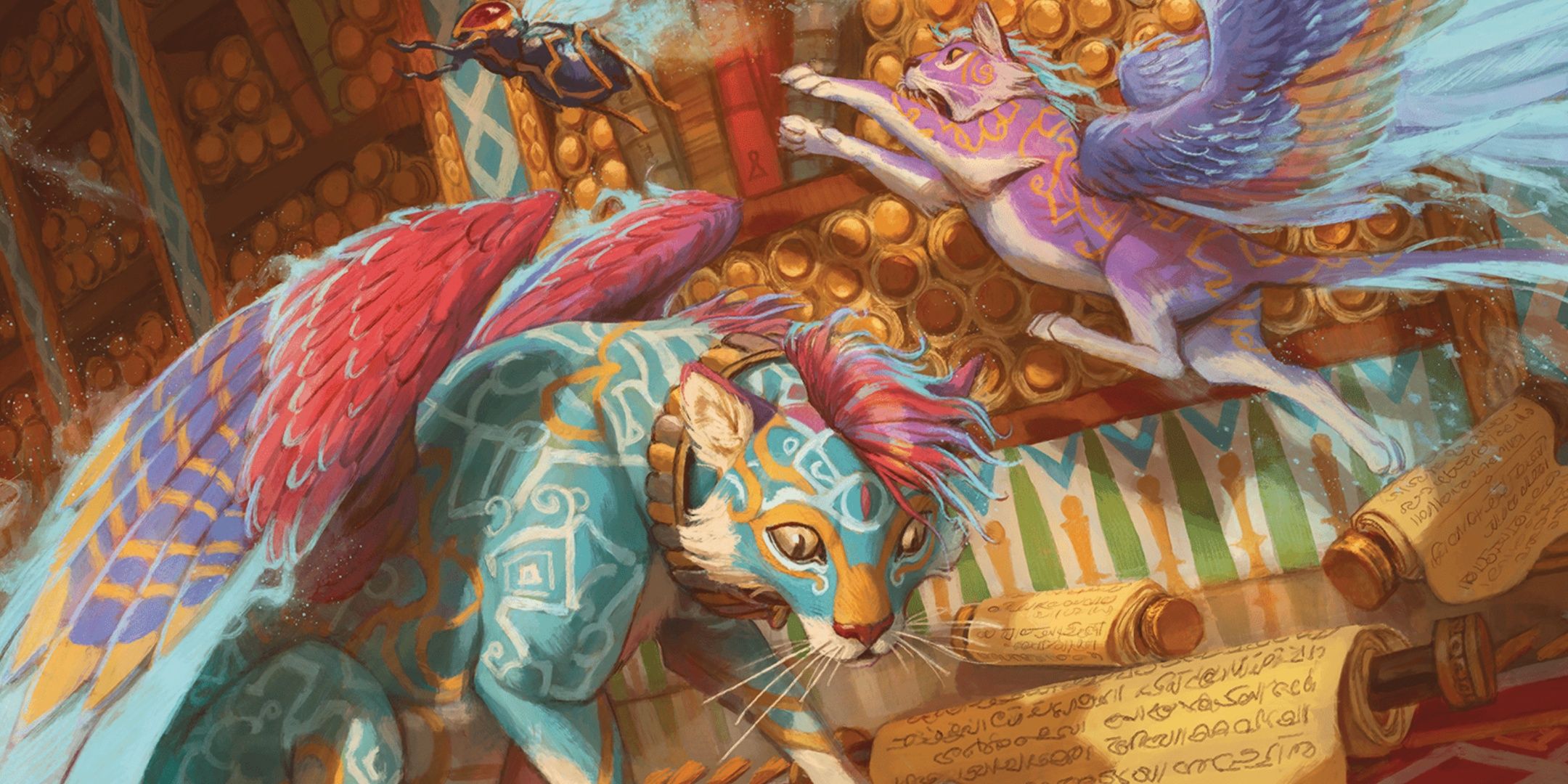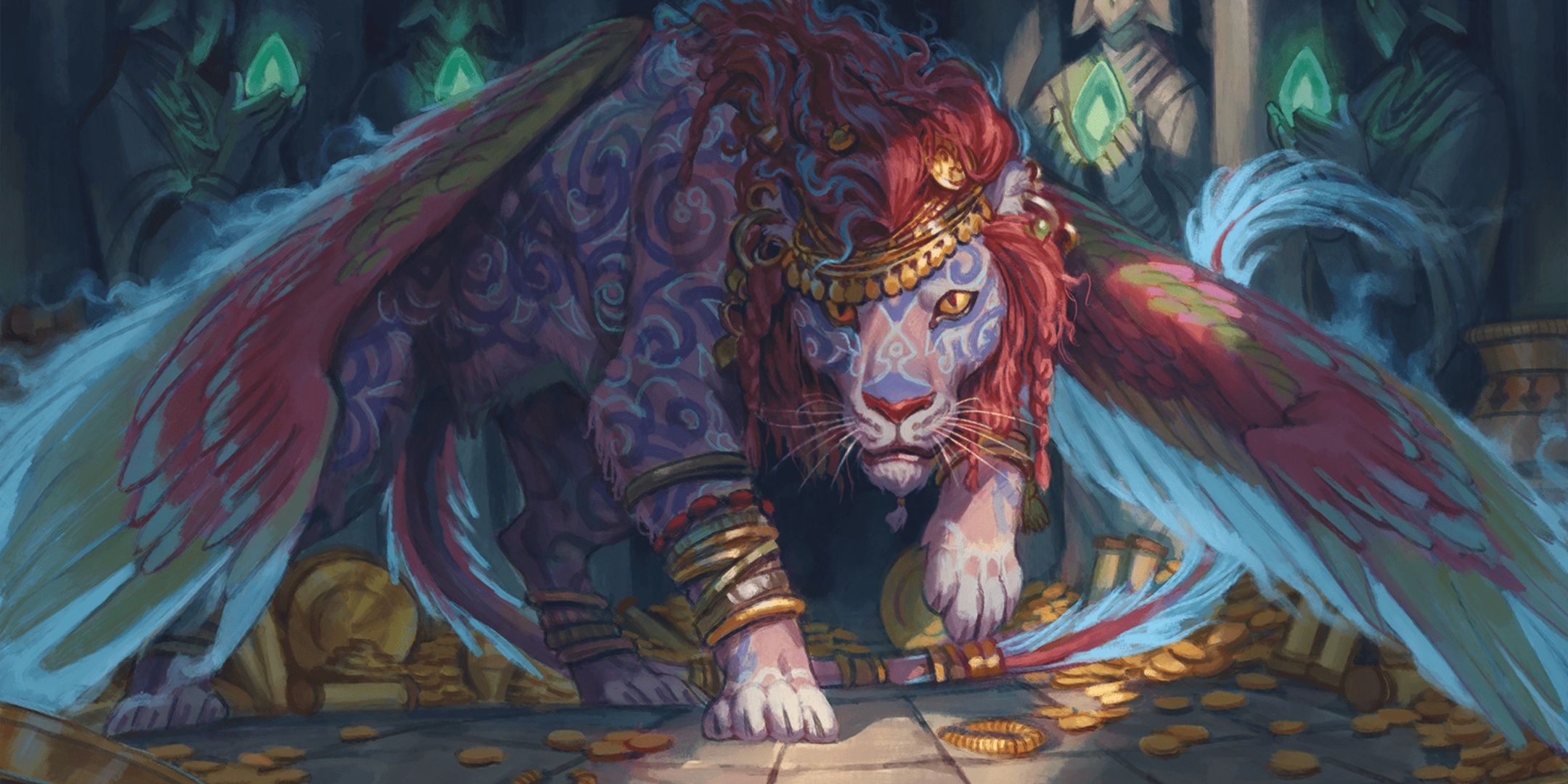The Sphinx can be a strange creature to use in Dungeons & Dragons because it blurs together multiple mythological concepts that share a common name and appearance. Should it be run along the lines of Greek mythology, imposing puzzles on adventurers and eating those who fail its riddle?

Related
Dungeons & Dragons: What Is An Arch-Hag?
Introduced in the 2025 Monster Manual, arch-hags are powerful magic beings that can either help or curse your party in D&D.
Should it follow the Egyptian sphinx, a companion beast to kings, benevolent and rule-abiding? The Monster Manual further expands the celestial origin of many Sphinxes and allows weak ones to serve as bonded familiars. Here’s how to run a Sphinx as a dungeon boss, both before and during the actual confrontation.
How The Sphinx Has Changed In 2025
The reprinted Monster Manual reclassifies the sphinx from a monstrosity to a celestial, leaning into their D&D mythology as creatures of divine magic.
The sphinx’s resistance to non-magical weapons has been removed, but it still resists necrotic and radiant damage alongside being immune to all psychic damage and afflictions.
Take note of what abilities your players have access to when planning out this combat. You can still choose to throw a sphinx at a Great Old One warlock but should compensate by making sure they have other opportunities to contribute to the adventure.
The sphinx family has been expanded with non-legendary encounters to fill out lower levels. The Sphinx of Secrets has the core abilities of the stronger sphinxes at a lower level, while the Sphinx of Wonder is a small companion creature intended for use as Warlock Familiars.
The Sphinx of Wonder works well as a minion to stronger encounters. They have low direct power in a fight but can grant bonuses to their allies, making them useful even at higher levels.
How To Use The Sphinx’s Legendary Actions
The Sphinx’s legendary actions have been simplified, alongside the changes in what spells they can cast. Both the Sphinx of Lore and Valor have access to the same abilities here.
- Arcane Prowl combines a teleport with a melee attack. This lets it escape most traps the players can spring and adds in some extra damage. Teleporting into the player’s backrow to hit the mages is a viable choice. Against slower characters it can teleport out of movement range just before a player’s turn.
- Weight of Years gives targets exhaustion levels if they fail constitution saving throws. The Sphinx is smart enough to target the characters with the weakest modifier on this save.
Weight of Years can be used only once per round, so three of four legendary actions are guaranteed to be used on Arcane Prowl. Against a party of four, it’ll be using a legendary action after every player turn.
While not a traditional legendary action, each sphinx has a unique roar action. The Sphinx of Valor doesn’t even need to give up a multiattack to use it. Almost all roars target wisdom saving throws and inflict debilitating conditions like incapacitated or paralyzed. If the Sphinx roars first it can then use its claw attacks with advantage on a paralyzed or prone opponent, and then follow up with more attacks from its legendary actions.
How To Use Lair Actions With A Sphinx
The Sphinxes of Valour and Lore have lost the lair actions wielded by their predecessors but you may choose to add these back in: They had a much more unusual assortment of lair actions than the typical giant monster and none of the lair actions deal direct damage or inflict conventional magical effects.
Each lair action can only be used once per encounter. You’ll want to hold off on using them just because they’re available.
The lair action with the biggest influence on a straight fight is forcing everyone to reroll initiative. If the players are skilled at setting each other up and enacting combos in initiative order, the reroll can disrupt this. The lair action takes place on initiative 20, so it can also throw off characters that rely on winning initiative, such as assassin rogues.
The other abilities serve more flavourful functions but as a result don’t work in a straightforward encounter.
- Aging creatures forwards and backwards can be a strong ability but doesn’t feel fair to use in the majority of encounters. Against most characters a single application won’t have a pronounced impact but sometimes it’ll be directly incapacitating with only a single save to prevent death or defeat.
- Throwing the party a decade into the future or past is a great narrative tool for use out of combat. The Sphinx can show the players a future where they fail, or strand them in an unfamiliar decade.
- Their innate planar shift can serve as an easy win button in fights but invalidates any party that doesn’t have access to their own planar magics.
The 2014 sphinxes also were able to cast a spell for three legendary actions. With dispel magic on both their spell lists, they could use a legendary action to negate a haste spell or other powerful buff the players use.
While the Androsphinx had access to banishment, its rarely a fun spell to use against players. Banishing the player that just acted fits a nice middle ground by giving the rest of the party an entire turn to try and break its concentration.
How To Resolve A Fight With A Sphinx
The Sphinxes are lawful celestials, so its rare for an adventuring party to want to fight them to the death. Instead, the best way to resolve the battle with the sphinx is to turn it into a test.
The sphinx could concede the victory if the party proves themselves capable. This could be by inflicting severe enough wounds, persuading it out of combat, or solving some sort of puzzle within the fight.
This is especially a good idea if you’re using the 2014 versions. It provides an in-character reason for the Sphinx to not use anti-fun strategies like plane shifting the party out of reality and stranding them.
For a more Greek-coded sphinx, the creature might instead determine the party are not worth the trouble of fighting and trade them magical secrets for their swift departure.
How To Use A Sphinx As A Long-Term Villain
Alongside the traditional use of the sphinx as a boss that tests the players but doesn’t oppose their goals, its also possible to use a sphinx for a long-term villain. This allows you to use their unique powers in different ways.
- A Sphinx is immune to any divination spell it doesn’t consent to.
- They can cast several expensive spells with no material components needed.
- Their old lair actions let them control the flow of time.
- Their regional effect has no limit on the number of targets.
Here are a few ways a Sphinx can use these abilities to serve as an indirect antagonist.
|
Role |
Sphinx Type |
Description |
|---|---|---|
|
Spymaster |
Lore |
Unlimited casts of clairvoyance can provide complete surveillance over a city, while infusion of knowledge can assist a network of academics or spies in gathering information. |
|
Guardian Beast |
Valor |
The Sphinx’s roars only impact enemies, allowing it to easily protect a master. Free access to Heroes’ Feast lets it provide powerful buffs to a larger group of bodyguards. |
|
Warlock Patron |
Any |
The player’s handbook lists the Sphinx as a potential warlock patron, allowing them to serve as a power behind the throne for a villainous spellcaster. |
|
Kingmaker |
Valor/Andro |
Free access to spells that cure disease and lair magic to reverse aging allow the sphinx to barter with others, calling in favours from powerful adventurers or rulers in exchange for their services. |

Next
Dungeons & Dragons: 7 Tips For Running A Blob Of Annihilation
Beware of the blob, it creeps and leaps and glides and slides across the floor…

















Leave a Reply